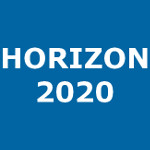Atomic and specificity details of Mucin 1 O-Glycosylation process by Multiple Polypeptide GalNAc-Transferase Isoforms unveiled by NMR and Molecular Modeling
Coelho, Helena ; Rivas, Matilde de las ; Grosso, Ana S. ; Diniz, Ana ; Soares, Cátia O. ; Francisco, Rodrigo A. ; Dias, Jorge S. ; Compañon, Ismael ; Sun, Lingbo ; Narimatsu, Yoshiki ; Vakhrushev, Sergey Y. ; Clausen, Henrik ; Cabrita, Eurico J. ; Jiménez-Barbero, Jesús ; Corzana, Francisco ; Hurtado-Guerrero, Ramon ; Marcelo, Filipa
Resumen: The large family of polypeptide GalNAc-transferases (GalNAc-Ts) controls with precision how GalNAc O-glycans are added in the tandem repeat regions of mucins (e.g., MUC1). However, the structural features behind the creation of well-defined and clustered patterns of O-glycans in mucins are poorly understood. In this context, herein, we disclose the full process of MUC1 O-glycosylation by GalNAc-T2/T3/T4 isoforms by NMR spectroscopy assisted by molecular modeling protocols. By using MUC1, with four tandem repeat domains as a substrate, we confirmed the glycosylation preferences of different GalNAc-Ts isoforms and highlighted the importance of the lectin domain in the glycosylation site selection after the addition of the first GalNAc residue. In a glycosylated substrate, with yet multiple acceptor sites, the lectin domain contributes to orientate acceptor sites to the catalytic domain. Our experiments suggest that during this process, neighboring tandem repeats are critical for further glycosylation of acceptor sites by GalNAc-T2/T4 in a lectin-assisted manner. Our studies also show local conformational changes in the peptide backbone during incorporation of GalNAc residues, which might explain GalNAc-T2/T3/T4 fine specificities toward the MUC1 substrate. Interestingly, we postulate that a specific salt-bridge and the inverse γ-turn conformation of the PDTRP sequence in MUC1 are the main structural motifs behind the GalNAc-T4 specificity toward this region. In addition, in-cell analysis shows that the GalNAc-T4 isoform is the only isoform glycosylating the Thr of the immunogenic epitope PDTRP in vivo, which highlights the relevance of GalNAc-T4 in the glycosylation of this epitope. Finally, the NMR methodology established herein can be extended to other glycosyltransferases, such as C1GalT1 and ST6GalNAc-I, to determine the specificity toward complex mucin acceptor substrates.
Idioma: Inglés
DOI: 10.1021/jacsau.1c00529
Año: 2022
Publicado en: JACS Au 2, 3 (2022), 631-645
ISSN: 2691-3704
Factor impacto CITESCORE: 5.3 - Chemistry (Q2)
Financiación: info:eu-repo/grantAgreement/ES/AEI/RTI-2018-099592-B-C21
Financiación: info:eu-repo/grantAgreement/ES/DGA/E34-R17
Financiación: info:eu-repo/grantAgreement/ES/DGA/LMP58-18
Financiación: info:eu-repo/grantAgreement/EC/H2020/956544/EU/Directing the immune response through designed nanomaterials/DIRNANO
Financiación: info:eu-repo/grantAgreement/ES/MICINN/RTI2018-094751-B-C21
Tipo y forma: Artículo (Versión definitiva)
 Debe reconocer adecuadamente la autoría, proporcionar un enlace a la licencia e indicar si se han realizado cambios. Puede hacerlo de cualquier manera razonable, pero no de una manera que sugiera que tiene el apoyo del licenciador o lo recibe por el uso que hace. No puede utilizar el material para una finalidad comercial. Si remezcla, transforma o crea a partir del material, no puede difundir el material modificado.
Debe reconocer adecuadamente la autoría, proporcionar un enlace a la licencia e indicar si se han realizado cambios. Puede hacerlo de cualquier manera razonable, pero no de una manera que sugiera que tiene el apoyo del licenciador o lo recibe por el uso que hace. No puede utilizar el material para una finalidad comercial. Si remezcla, transforma o crea a partir del material, no puede difundir el material modificado.
Exportado de SIDERAL (2023-09-13-15:17:44)
Visitas y descargas
Idioma: Inglés
DOI: 10.1021/jacsau.1c00529
Año: 2022
Publicado en: JACS Au 2, 3 (2022), 631-645
ISSN: 2691-3704
Factor impacto CITESCORE: 5.3 - Chemistry (Q2)
Financiación: info:eu-repo/grantAgreement/ES/AEI/RTI-2018-099592-B-C21
Financiación: info:eu-repo/grantAgreement/ES/DGA/E34-R17
Financiación: info:eu-repo/grantAgreement/ES/DGA/LMP58-18
Financiación: info:eu-repo/grantAgreement/EC/H2020/956544/EU/Directing the immune response through designed nanomaterials/DIRNANO
Financiación: info:eu-repo/grantAgreement/ES/MICINN/RTI2018-094751-B-C21
Tipo y forma: Artículo (Versión definitiva)
Exportado de SIDERAL (2023-09-13-15:17:44)
Enlace permanente:
Visitas y descargas
Este artículo se encuentra en las siguientes colecciones:
Artículos
Registro creado el 2023-02-24, última modificación el 2023-09-14
